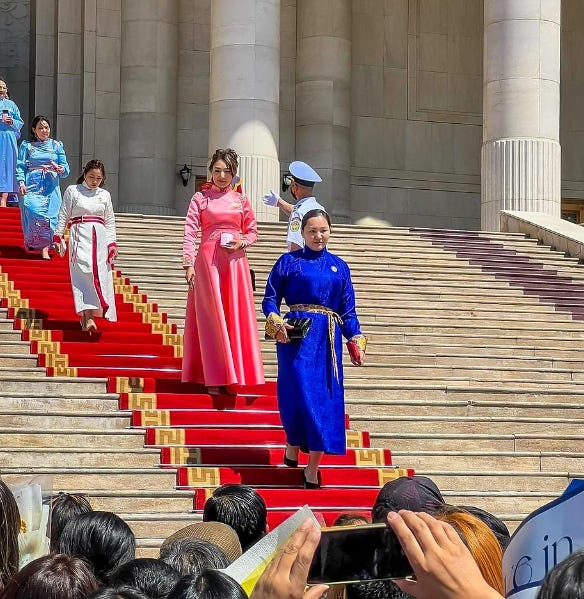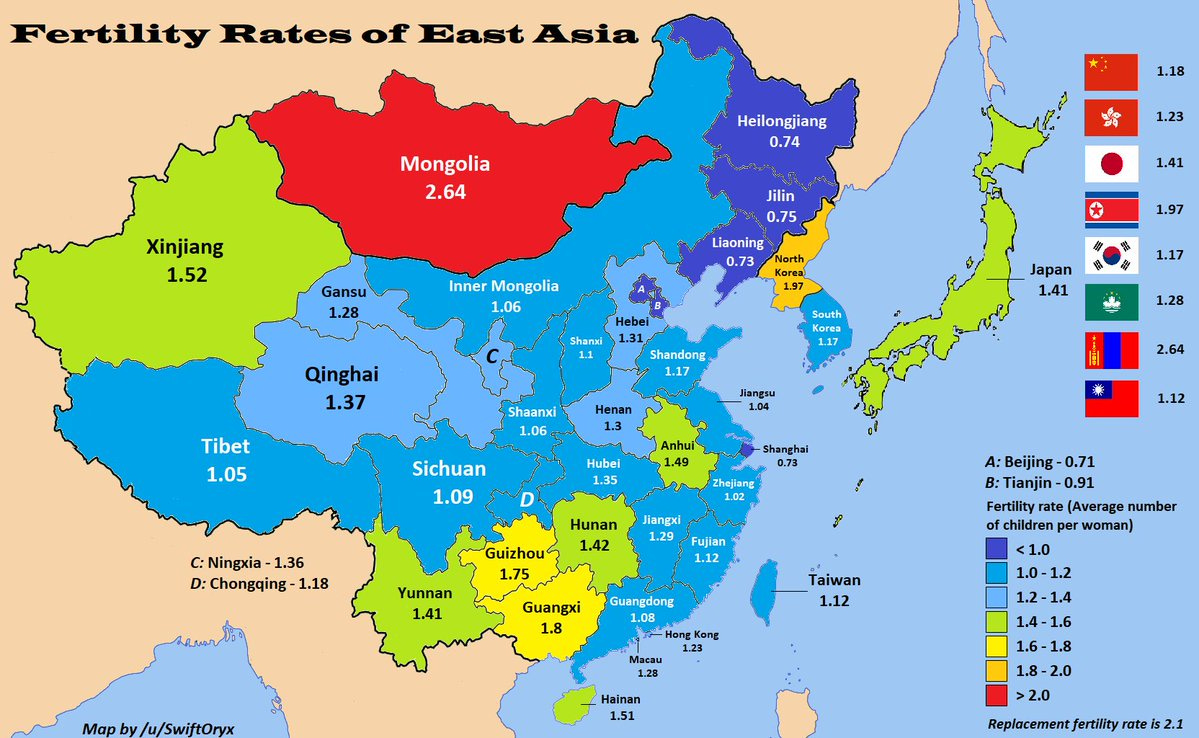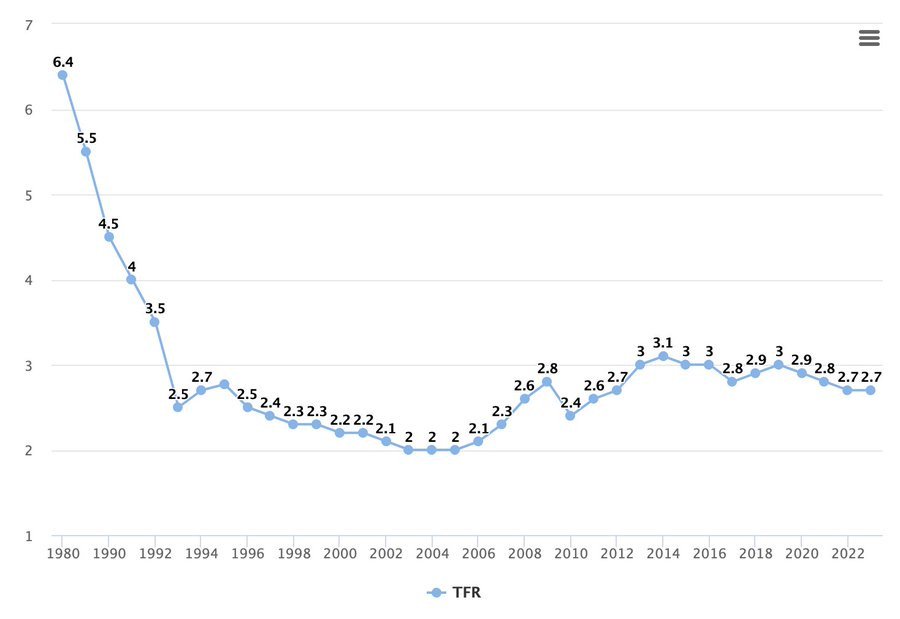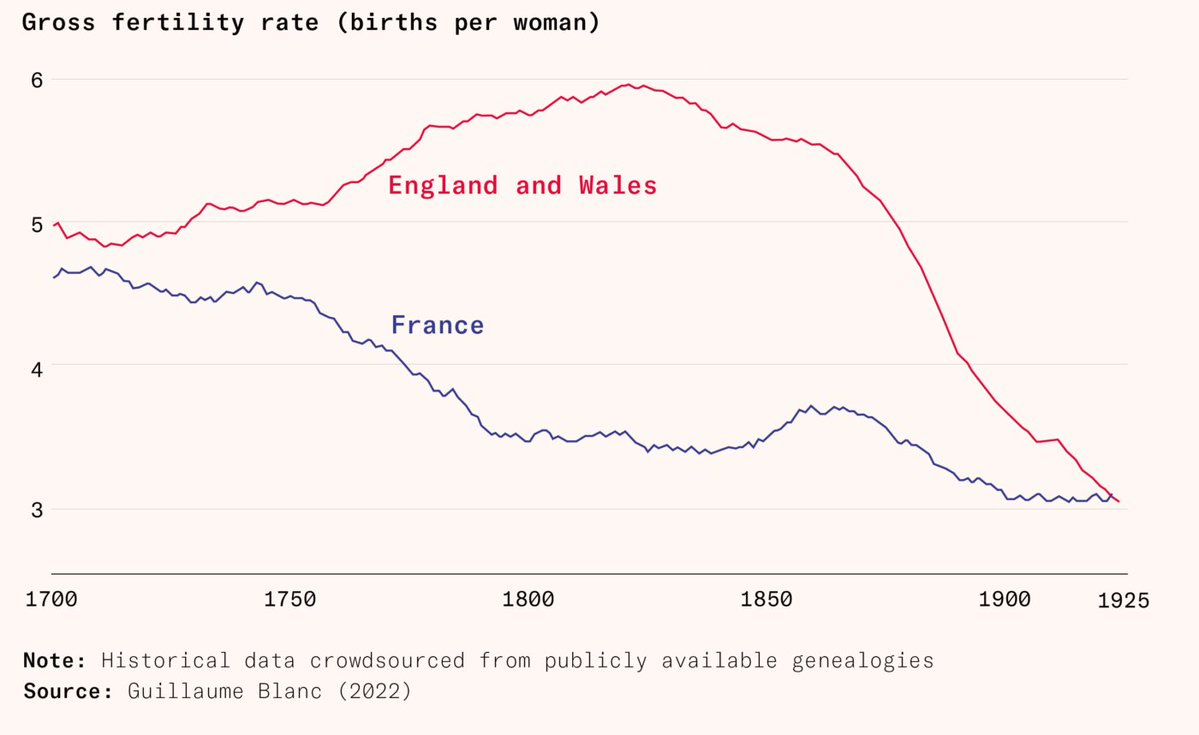Elevating the Status of Motherhood Solves Low Birthrates: The Extraordinary Case of Mongolia
For 68 years, Mongolian leaders have given the Order of Maternal Glory to mothers. This raised the status of motherhood and helped forge a remarkably pro-natal culture.
Mongolia's pro-motherhood culture stands out on a fertility map. Fertility in Mongolia has consistently been 2-3 times(!) higher than neighboring areas in recent years and it has been increasing over the past 20 years, even as its neighbors have seen birthrates plunge!
Mongolia's incomes are comparable its neighbors. It is urbanized. This is also not a case of religiously driven fertility; Mongolia is primarily Buddhist and non-religious.
This is about the status of motherhood. In Mongolia, the president himself gives an award to every mother of four!
Mongolian mothers of six are presented with the Order of Glorious Motherhood, First Class. Second Class if you have four.
Here, celebrated mothers descend the steps of the State Palace in Ulaanbaatar on a red and gold carpet, the statue of Genghis Khan directly behind them.
The Mongolian president holds separate ceremonies by district, in order to be able to give more personal attention to recipients. There is a cash award too, but it is just $60 for a mother of six. Clearly, this a story motherhood and status in Mongolian society.
So important is this award that Mongolia's consulates are even tasked with conferring the award to Mongolian mothers abroad. Here, Mongolia's ambassador to the United Nations presents the award to a mother in Geneva.
Status around motherhood is a crucial and under-appreciated driver of birthrates
We have seen this elsewhere! By honoring parents, Patriarch Ilia of Georgia created a baby boom, something generous financial incentives elsewhere could not achieve.
Status helps explain the paradox that as societies become richer, fertility usually drops. Even though absolute well-being has risen, living in a wealthy society offers no increase in relative status. In fact, the status competitions of modern life, like education and career, directly compete with family life.
This also tracks with how in cultures where parenthood is elevated to high status, such as among religious subgroups like the Amish, Haredi Jews and traditionalist Catholics, fertility can be much, much higher.
As well, this helps explain the remarkable fertility of England and Wales during Victorian Times. Queen Victoria, the personification of the era, both inherited and carried forward a culture that conferred high-status on motherhood in raising nine children.
In Korea meanwhile, the highest status people are childless, and culture is filled with every status competition but one around parenthood.
The message is that we have to find a way to honor motherhood like our civilization depends on it.
Mongolia helps show the way!










You'd think in America this probably shouldn't come from the top, from the President, because people would dismiss it as a political stunt. But maybe if they would keep it up it'd work! Imagine an annual National Moms' Breakfast. 100 moms (two from each state?) with 4-5+ kids invited to the white house to have a meal with the President and the First Lady. Or 435 moms, one from every congressional district.
It would get some media attention, people would talk about it for sure. I think a cash prize would cheapen it but the President should pay for airfares, babysitting, a new outfit, and other expenses. It would have its detractors but if you keep doing that, I think you raise the status of motherhood in America. Ideally state governors participate and hold their own annual Moms' Breakfasts too.
The other route is pop culture, and I'm not sure how you turn the tide around there but it's nice to see Taylor Swift put out an album saying she wants to have a couple of kids now, and that alone might do more than a President's breakfast!